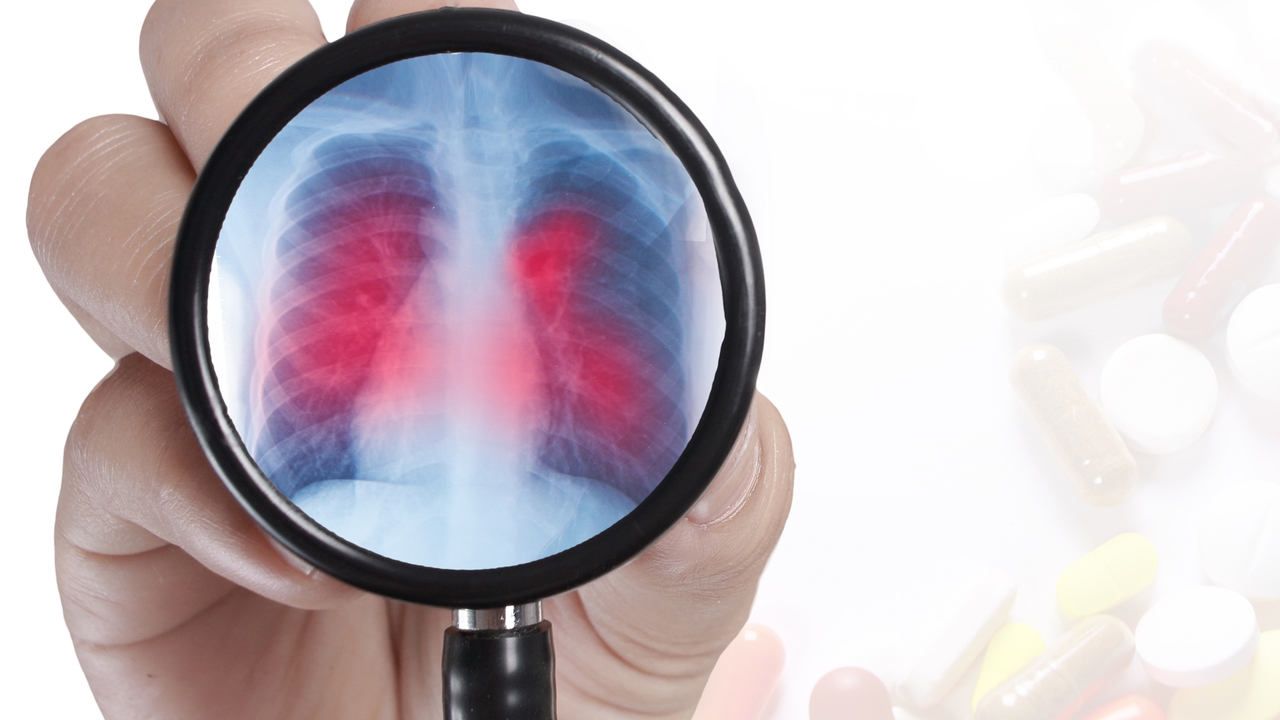Chest pain when breathing or coughing, fever, chills, fatigue, or coughing up phlegm are some symptoms of pneumonia, a lung infection that can be caused by bacteria, viruses, or fungi. in Spain, Its incidence is estimated to be 2 to 10 cases per 1,000 inhabitants per year. Children under five and the elderly, as well as patients with chronic diseases such as COPD, heart disease or diabetes, are the most vulnerable. But we’ve all been exposed to it.
Early diagnosis and treatment can reduce complications. Therefore, it is important to see a doctor. But how do you tell the difference between pneumonia and the flu?
Influenza is a viral illness that usually starts “suddenly, Often associated with coughing, sneezing, nasal and conjunctival congestion, general malaise, fever, muscle pain, and fatigue. It usually subsides within a week. It is only symptomatic treatment to reduce fever or avoid headache or muscle pain. Some antiviral drugs are effective if taken on the first day of illness, but in influenza, diagnosis is often delayed, making it difficult to administer antiviral drugs,” Ángel Gil, professor of public health preventive medicine at King Juan University · explains Ángel Gil de Miguel, Universidad Carlos de Madrid on the occasion of today’s celebration of World Pneumonia Day.
On the other hand, “the most common form of pneumonia,” he continued, “is associated with pneumococci (a type of streptococcus) and usually presents with fever.” (above 38°C), cough with phlegm (mucus), chest pain, pain when coughing or even when swallowing drinks or food, general malaise, feeling of weakness, “general” manifestations of a general state reflected in the blood using several altered Parameters are tested, but the most important are seen on a chest X-ray. “The treatment is antibiotics.”
Now, while pneumonia is associated with fever over 38°C, fever is not always present in people over 65. Specifically, “30 to 40% of adults and elderly people do not have fever despite having pneumonia. “We have to take this into account” and evaluate all symptoms, said Respirologist and Head of the Critical Respiratory Monitoring Unit at the Hospital Clinic de Barcelona Dr. Antonio Torres said.
The explanation is that although fever is most common in pneumonia, “the elderly, children and people with weakened immune systems may not develop fever,” explained Dr. Antonio Trilla, an epidemiologist at the same hospital. The expert stressed the importance of treatment, as pneumonia can cause complications such as respiratory failure, sepsis or lung abscess or pleurisy and empyema.
“In very severe cases, adult respiratory distress syndrome may develop, which may require admission to the ICU and intubation and non-invasive or invasive ventilation. “Severity depends on the microorganism, the patient’s general condition, age and whether there are any Obvious pre-existing medical conditions. “
Another difference is that pneumonia is not a seasonal disease. You can suffer from this disease at any time of the year, “especially bacterial ones. Viral infections such as influenza or respiratory syncytial virus (RSV) are seasonal in the fall and winter, but the seasonality is becoming less and less.” Gil de Miguel said.
Regarding the mode of transmission, pneumonia can be transmitted through inhalation or through direct contact with respiratory secretions such as mucus and saliva. In the case of the flu, the virus spreads through the air when a person with the virus sneezes, coughs or talks.
The main way to prevent pneumococcal pneumonia (caused by bacteria) is vaccination (For other types of pneumonia, there is no vaccine). For young children, coverage in all autonomous regions exceeds 95%. However, adult vaccination status is very irregular and varies widely between autonomous regions, but none exceeds 50%. In fact, it’s only in pandemic years that this number is exceeded. ” said Gil Demiguel.
We must continue to work to improve these numbers, “especially adults over the age of 60-65,” Dr. Trilla said.
this is also important «Don’t smoke and drink alcohol as they are risk factors for pneumonia. Torres noted that in addition to patients with chronic obstructive pulmonary disease, diabetes and cardiovascular disease being more likely to develop pneumonia, certain medications, such as corticosteroids, can also increase the risk for patients taking these medications.
Regarding “the flu,” the doctor continued, “Getting an annual flu shot is the best prevention, along with avoiding contact with people who have the flu.”
Additionally, “influenza favors the complications of pneumococcal pneumonia,” Dr. Torres added. Research conducted by the CEU San Pablo University in coordination with the Carlos III Health Institute proves that Influenza, along with bacterial pneumonia, more than triples the risk of death.
at the same time, Pneumonia is a cardiovascular risk factor In the short and medium term, because according to a study by Lafite Hospital, the risk of certain cardiovascular diseases after 30 days of hospitalization for pneumonia is four times higher than that of patients without lung infection.
To avoid infecting others, in both cases you must wear a mask and practice optimal hand hygiene, both for the sick person and those you live with.
Report prepared in collaboration with Pfizer

